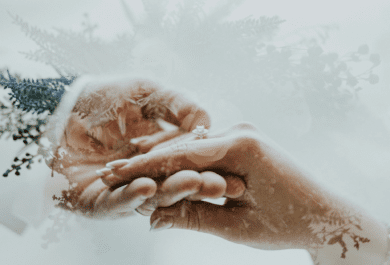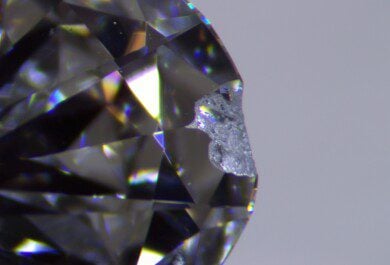In the course of this first quarter of 2005, AGS will launch new grading reports for princess-cuts. For the first time in the history of diamonds and grading labs, there will be a cut-grade on a fancy shape.While we are preparing and cutting some princesses in order to get a 0-grade, we are amazed by the major changes that this new grading report demands. I will try to highlight these here.
Traditional approach to princess-cuts
From its inception, the princess-cut was a shape, that was designed for weight-retention of nice crystal-shapes (octahedrons). Because no cut-grading existed for fancy shapes, there was absolutely no market pressure to cut for more beauty, and the little difference that retailers made between a beautiful princess and an average princess had little effect on pricing, nor on average cut-quality.
The basic features of most currently available princess-cuts are:
- a very low crown height, combined with shallow crown angles and a large table,
- a rather deep pavilion, in which the majority is hidden in the first pavilion angle.
An AGS-study on the currently available princess-cuts shows that more than 50% of these stones would get an AGS-cut-grade of 5 or lower. Only the top-20% would get a cut-grade of 2 or higher, with the 0-grade only being attributed to about 3% of the current princess-cuts.
Major differences of the AGS-0-princess-cut
- Crown areaIn the current market, it is generally known that a princess-cut with a higher crown-height and a smaller table is generally more beautiful. Based on its studies, AGS takes this concept further than anyone currently cutting princesses does.
- Their study results in more than 60% of the possible 0-combinations having a table size of 60% or lower. A smaller table coincides with a higher crown height.
- Pavilion areaWhen judging princess-cuts, AGS has found that one should look at two pavilion angles, P1 and P2. In a summary-Sarin-(or OGI)-measurement, P1 is however not mentioned. It is in this angle, that a cutter currently can hide a lot of weight.While we are now cutting some AGS-0-princesses, we find that the necessary AGS-angle for P1 is about 10° lower than the one traditionally used. You will probably agree with me that this difference is astronomical.
How does this affect the look of princess-cuts?
AGS’ research was based both upon actual study of stones and on virtual stones. This last part of their study has probably allowed them to think outside of the box.
The resulting princess-cut with AGS-0-grade therefore is a spectacular stone, which in no way can be compared to the currently available princess-cuts. You can expect light return which is close to the best round brilliants, enhanced by a much stronger contrast pattern.
Basically, AGS has us taking a giant leap from the Middle Ages directly into the 21st Century. Because of this the AGS-0-princess will be incomparable to the traditionally available princess-cut.
Generally, one could think that a higher crown height would lead to a loss of spread in the stone, in other words that one would have less surface for the same weight. With the pavilion however seriously trimmed down, we will remain with the same or better spread than in the traditional princess-cuts.
Effects on cutting
Traditionally, a rough octahedron of about 3 Cts would be sawn through the center of the stone, resulting in two pyramid-shapes. These would result in two traditional princesses of 1 Ct., with a shallow crown and a heavy pavilion.
When cutting for AGS-0-princesses, we have to take the sawing plane above the center of the rough stone. In that way, we can gain a higher crown, while staying above 1 Ct. for that finished stone. In the pavilion area however, with the much shallower P1-angle,we will loose weight again compared to the raditional princess-cut. In the end, we will have one finished AGS-0-princess of slightly above 1 Ct.
The other side of the sawn stone however will be much smaller, and this will probably yield a stone of only 0.25 Ct. To summarize, you can see that the same rough stone will yield us only 1 stone of 1 Ct plus a small side-stone, while it traditionally yielded 2 stones of 1 Ct.
Effects on pricing
The above example already clearly shows the effect on yield, and this of course has a direct effect on the cost of each finished stone. You should not be surprised that an AGS-0-princess cut will cost about double of the traditionally available one.
Of course, the mere existence of a cut-grade will also change the traditional way of cutting. And the consumers’ awareness of cut-grading for princesses will probably also create several layers of quality and pricing.
At this point in time, the average princess-cut has a cut-grade of 5 or lower and costs x $. The future AGS-0 will cost about double of this. But with more consumers aware of cut-grading and not wanting to purchase an AGS-5 or lower, this price should go down.
One can safely say that the introduction of cut-grading in princesses will shake the market, and if consumers accept this grading, it will dramatically change the complete market-structure in both pricing and available cut-quality.
How about princess-cuts without an AGS-report?
The new AGS-grading depends on a 3D-scan of the actual diamond, and that model being entered into AGS-software. Cutters also have access to approximate parameters of ideal-grades.
However, in order to make an estimated guess on the AGS-grade on a non-AGS-stone, we need a full Sarin-measurement with all details. Like I already mentioned, in the summary of a Sarin- or an OGI-measurement, the very important P1-angle is not mentioned.
In the end, estimating an AGS-cut-grade on a non-AGS-stone will be a very complicated matter. In order to be absolutely sure of the cut-grade, we will need an AGS-report.
Summary
The main point to remember about the princess-grading of AGS, is that they make us think completely outside of the box. Even when comparing currently available princess-cuts, we will be able to discern the ones with a better light performance. But chances are high that these current best cuts will be future AGS-3-grades compared to more than half being AGS-5 or lower.
While cutting our first AGS-0-princesses, we see and learn that they are light years away from what is currently being offered for sale. This could well be the Industrial Revolution of fancy shapes in diamonds.
Discussion











